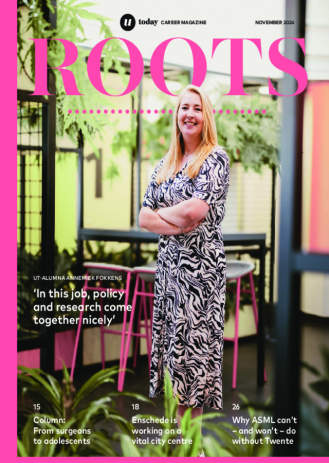c5a
Cluster for Cloud to Coast Climate Change Adaptation (C5a) was a large European project involving ten partners from six countries in the North Sea Region. The UT was the main academic partner in the project and was represented by the Section of Governance and Technology for Sustainability (CSTM) at the BMS Faculty. The project’s main outcome was ‘Cloud to Coast’, a systemic approach to flood resilience that can be applied in practice.
The C5a project was initiated in order to improve the management of flood risk in the North Sea countries, including the Netherlands. ‘The North Sea Region is facing a significant increase in the frequency and severity of floods as a result of climate change,’ says Gül Özerol, Assistant Professor at CSTM. ‘On top of that, the region is threatened by a sea level rise, heatwaves, and droughts – as we are already experiencing. The countries, therefore, wanted to tackle this challenge together.’
Use in practice
The main goal of this European collaboration was to develop a practical approach that could be used by local authorities and policymakers. ‘We often hear that systemic adaptation is too conceptual and hard to use in practice,’ says postdoc researcher Erwin Nugraha. ‘That is why stakeholders at all levels were involved in this project. It was very practice-oriented. The outcomes will be publicly disseminated so that authorities can use them and adopt the approach in their regular planning cycle.’
The Dutch city of Dordrecht was one of the seven case studies within the project. ‘They have applied our approach in their effort to make Dordrecht resilient and self-reliant,’ says Nugraha. ‘They came up with some innovative ideas for flood management, such as creating an elevated route for evacuation and building floating housing. These strategies were further developed through the Cloud to Coast approach together with local residents. We are also happy to see that they plan to continue applying our approach beyond the project.’
Urgency
‘Having an integrated approach to climate change adaptation is essential,’ stresses Özerol. ‘Right now, everyone works in silos, but we need to consider the whole system. We should not only look at floods separately, but we also need to consider other sectors – coastal protection, urban development, agriculture, infrastructure and so on. A change in one sector impacts the whole system. We also need to include all stakeholders. Vulnerable groups suffer in case of floods, droughts or heatwaves, but they are often not involved in the decision-making. And their situation will only get worse because the climate change impact will increase. The urgency is there.’







